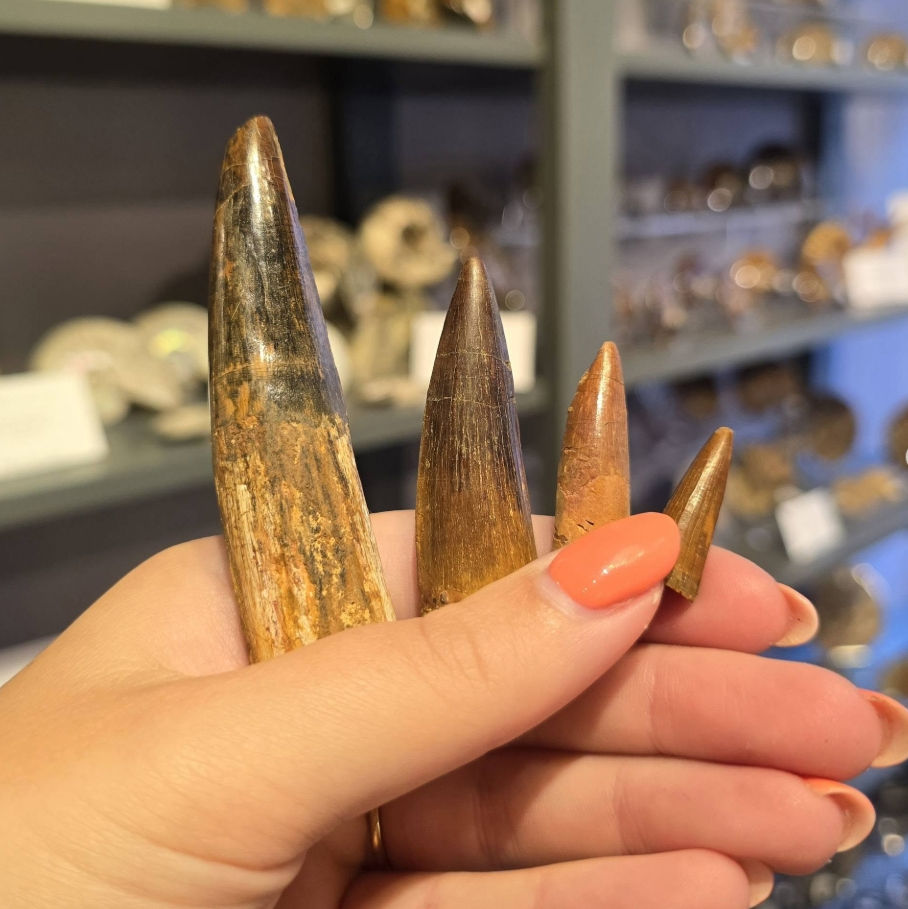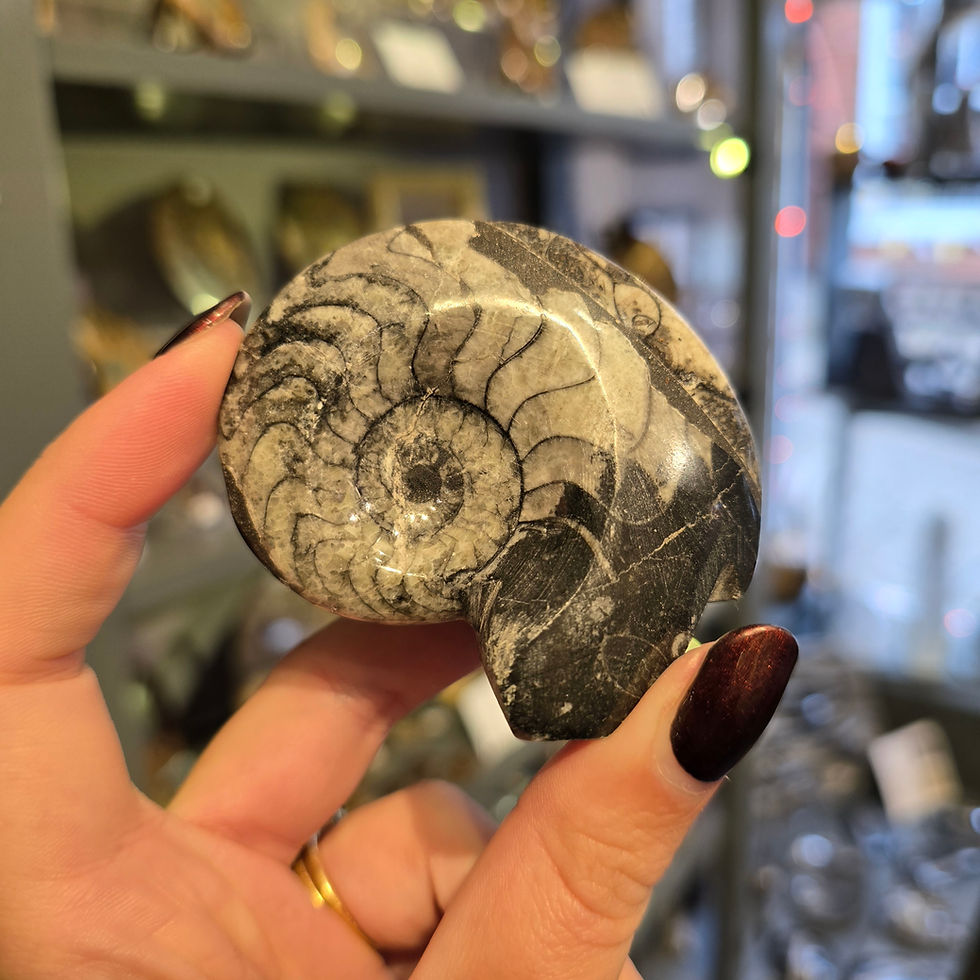The Spectacular Spinosaurus: A Glimpse into a Prehistoric Predator
- lapidartlincoln
- Sep 29
- 2 min read

Spinosaurus is one of the most fascinating & unusual dinosaurs ever discovered. Living around 95 to 100 million years ago during the Cretaceous period, Spinosaurus roamed what is now North Africa in countries like Egypt & Morocco. A Spinosaurus dinosaur was actually the longest therapod dinosaur, even longer than the famous T-Rex, growing up to 18 metres long and was tall as a male giraffe!

Unlike most other large theropods, its thought that the Spinosaurus wasn’t just a land-based predator. Fossil evidence actually shows that it probably spent much of its time in water, hunting fish & swimming through vast river systems. In fact, it’s the only known dinosaur adapted for a semi-aquatic lifestyle, this huge dinosaur had a sail like fin to navigate when swimming and a long, crocodile-like snout for holding onto slippery prey.

One of the most common Spinosaurus fossils found today are its teeth, and these come in a wide variety of sizes. Some are small which are just a few centimetres long, while others can reach lengths of more than 10 cm. There are a couple of reasons for varying sizes of teeth. Firstly, like modern reptiles, the Spinosaurus continually shed and replaced its teeth throughout its life, so the fossil teeth often show different growth stages. Secondly, the size of the tooth can also indicate the age or size of the individual dinosaur, naturally the juveniles had smaller teeth, while adults had larger ones. Finally, the size of the tooth varied depending where the tooth was in the jaw, with smaller teeth towards the back and the largest at the front.
How to identify a Fossil Spinosaurus Tooth
The shape and wear of the teeth suggest that Spinosaurus didn’t chew its food but instead used its teeth to grip slippery prey while in the water, which gives it easier identifying features to other therapod dinosaur teeth.
SPINOSAURUS | OTHER THERAPOD DINOSAURS |
Long, slender and conical | Broad, robust and blade-like |
Smooth edges, rarely serrations | Visible serrations along both edges |
Slightly curved or straight | Strongly curved |
Conical, rounded | Flattened side-to-side, not round |
Adapted for gripping slippery prey | Designed for cutting flesh and bone |
The period that the Spinosaurus lived in was hot, humid and teeming with life. The area was covered with large river systems and lush wetlands, unlike the dry desert areas seen in Africa today. This warm and watery environment supported a huge variety of creatures, from massive fish and crocodile-like reptiles, including the Sarcosuchus, and other dinosaurs. Alongside Spinosaurus, you’d find predators like Carcharodontosaurus and herbivores like Ouranosaurus!
Did you know we have a huge selection of Spinosaurus Teeth available instore and on our website! With prices starting from just £10, its time to add a Spinosaurus tooth to your fossil collection.











Comments